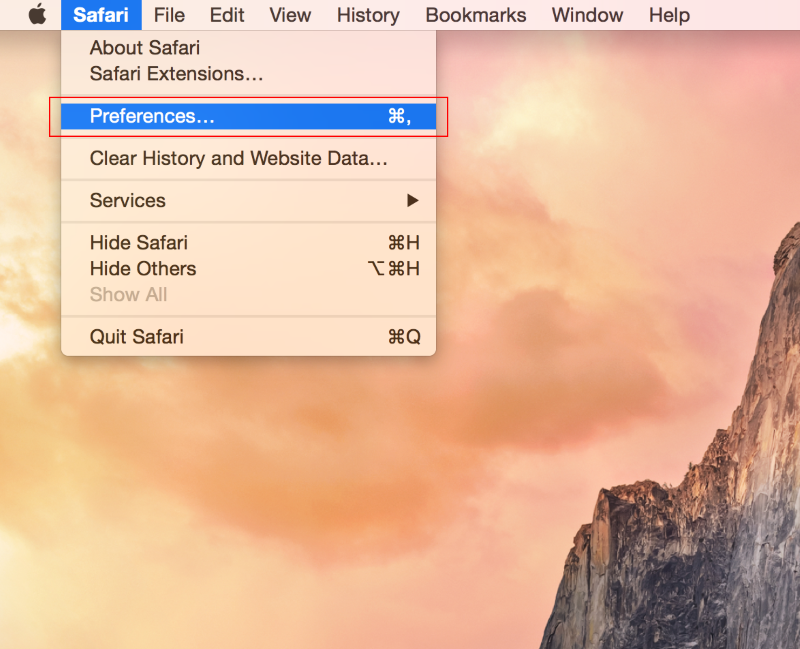

#Safari preferences menu code
Clicking with the inspector on the page will highlight the code and assets for that element.

This is useful when a site is serving different pages or css to different browsers. User Agent lets you change how your web browser is identified by the web server.Open Page With, which lets you open the displayed webpage using a different web browser on your computer.The error console also displays other messages from console.log, console.error, console.warn, console.assert, and functions inserted into code. Open Safari preferences in the Safari Menu, click Advanced, and select Show Develop menu in menu bar.īy far the most important item for me is Show Error Console. When this is selected, you can view the underlyingHTML for the page, Javascripts and a FireBug-style error console with syntax errors and warnings. There’s a Web Inspector that lets you see exactly how the HTML is formed, a Javascript console that lets you see errors and debugging messages written into the code and much more.īut to use them you must enable the Debug menu in Safari. Rm -Rf ~/Library/Saved\ Application\ State/ find the new debugging tools in Safari almost as useful as Firebug. Rm -Rf ~/Library/Preferences/Apple\ -\ Safari\ -\ Safari\ Extensions\ Gallery Rm -Rf ~/Library/Cookies/Cookies.binarycookies Rm -Rf ~/Library/Caches/Apple\ -\ Safari\ -\ Safari\ Extensions\ Gallery Mv ~/Library/Safari ~/Desktop/Safari-`date +%Y%m%d%H%M%S` Run the commands below and follow the onscreen instructions to complete the reset steps.Launch Terminal via Spotlight or Launchpad.If your Safari browser is still in use, use the Force Quit feature in the Finder to quit it.If you know Terminal well, you can use it to reset your Safari browser.
#Safari preferences menu how to
How to Reset Safari on Mac Using Terminal Repeat steps 2 and 3 to delete the Safari extensions in /Library folder.Find the folder named Internal Plug-Ins and drag the extensions related to Safari to the Trash.

Paste the file path ~/Library into the search box and hit Return.On your desktop, press Shift+Command+G keys to open the Go to Folder window.Safari plug-ins are usually stored in the ~/Library and Library folders. You can disable plug-ins in Safari, but you cannot delete them. Click the Security tab and uncheck the check box next to Allow Internal Plug-Ins.To uninstall an extension, click the Uninstall button and follow the onscreen instructions to delete it from your Mac in the Finder.To disable an extension, uncheck the box in front of the extension.Click Safari menu > Preferences > Extensions.Deleting website cookies may reduce tracking, but it will also sign you out of your logged-in website.


 0 kommentar(er)
0 kommentar(er)
